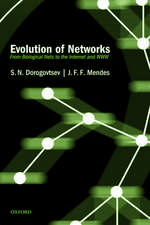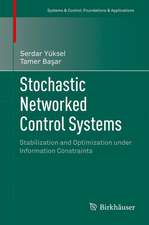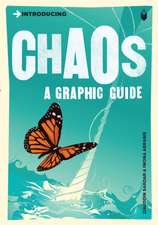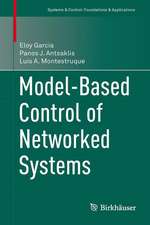Economics as an Agent-Based Complex System: Toward Agent-Based Social Systems Sciences
Autor H. Deguchien Limba Engleză Paperback – 3 oct 2013
| Toate formatele și edițiile | Preț | Express |
|---|---|---|
| Paperback (1) | 639.41 lei 6-8 săpt. | |
| Springer – 3 oct 2013 | 639.41 lei 6-8 săpt. | |
| Hardback (1) | 645.60 lei 6-8 săpt. | |
| Springer – 26 mar 2004 | 645.60 lei 6-8 săpt. |
Preț: 639.41 lei
Preț vechi: 752.24 lei
-15% Nou
Puncte Express: 959
Preț estimativ în valută:
122.37€ • 132.87$ • 102.79£
122.37€ • 132.87$ • 102.79£
Carte tipărită la comandă
Livrare economică 22 aprilie-06 mai
Preluare comenzi: 021 569.72.76
Specificații
ISBN-13: 9784431679653
ISBN-10: 4431679650
Pagini: 276
Ilustrații: XIII, 261 p.
Dimensiuni: 155 x 235 x 20 mm
Greutate: 0.39 kg
Ediția:Softcover reprint of the original 1st ed. 2004
Editura: Springer
Colecția Springer
Locul publicării:Tokyo, Japan
ISBN-10: 4431679650
Pagini: 276
Ilustrații: XIII, 261 p.
Dimensiuni: 155 x 235 x 20 mm
Greutate: 0.39 kg
Ediția:Softcover reprint of the original 1st ed. 2004
Editura: Springer
Colecția Springer
Locul publicării:Tokyo, Japan
Public țintă
ResearchCuprins
Preface.- 1 Systems Description and Models in Economics.- Purpose of This Chapter.- 1.1 A Systems Description of Economics Systems.- 1.2 Paradigm Shift.- 1.3 Conception of This Book.- 1.4 Methodological Issue.- 1.5 Three Types of Realities.- 1.6 Beyond the Systems View of Natural Science.- 1.7 An Epistemological Framework for a Poly Agent System.- 2 Mathematical Research of Evolution and Structural Change.- -Social Learning Dynamics and Its Bifurcation-.- Aim of This Chapter.- 2.1 Structural Change and Bifurcation in Social Sciences.- 2.2 Game Theory and Evolutionary Games.- 2.3 Social Learning Dynamics.- 2.4 Asymmetrical Social Learning Dynamics.- 3 A Social and Organizational Learning Model of Decision Making.- -Application of SLD and Agent Based Simulation-.- Purpose of This Chapter.- 3.1 Indirect Control.- 3.2 Norm Formation, Mutual Commitment and Structural Change.- 3.3 Social Learning Dynamics of the Norm Game.- 3.4 Centralized and Hierarchical Commitment and Support.- 3.5 The Historical Change of Social Commitment Structure.- 3.6 Commitment and Learning Rationality.- 4 The Tragedy of the Commons and Its Agent Based and Gaming Modeling.- Aim of This Chapter.- 4.1 Gaming Simulation and ABM.- 4.2 Environment Management Gaming.- 4.3 How to Play Environment Management Gaming.- 4.4 The Facilitator's Guide of Environment Management Gaming.- 4.5 Human Gaming Simulation of the Commons.- 4.6 Agent Based Simulation and Classifier.- 4.7 Agent Based Simulation of the Commons.- 4.8 Agent Based Simulation of the Commons.- 5 State Space Complexity and Exchange Algebra.- Purpose of This Chapter.- 5.1 Introduction.- 5.2 Axiomatic Foundation of Economic Exchange.- 5.3 Exchange Algebra.- 5.4 Concluding Remarks.- 6 The National Economic Field and Algebraic Reconstruction of SNA.- Aimof This Chapter.- 6.1 The Virtual Economy.- 6.2 The Structure of Economic Field and SNA.- 6.3 Classification of Transactions.- 6.4 National Economic Field: Aggregation.- 6.5 National Economic Field and Bottom Up Reconstruction of SNA.- 6.6 Integrated National Economic Field.- 6.7 Conclusion.- 7 Gaming Simulation and the Dynamics of a Virtual Economy.- Aim of This Chapter.- 7.1 Introduction.- 7.2 Assumption of Virtual Economy Gaming.- 7.3 Three Types of Gaming Simulation for a Virtual Economy.- 7.4 Multi Player's Gaming Model.- 7.5 The Failure and Success of Economic Growth by Gaming.- 7.6 A Multiplier Analysis of a Virtual Economy.- 7.7 Agent Based Simulation of Bird's Eye View Model.- 7.8 Long Term Growth Path.- 7.9 Conclusion.- 8 Network Oriented Industrial Structures.- Aim of This Chapter.- 8.1 What Is a Network?.- 8.2 Industrial Networks in the Software Industry.- 8.3 Networks of Medium and Small Enterprises.- 8.4 The Merits of a Network and Networks of Medium and Small Companies.- Notes.- 9 Learning Dynamics in Platform Externality.- 9.1 Platform Concept.- 9.2 Platform Externality.- 9.3 Model of Platform Externality and Lock In.- 9.4 Bifurcation Analysis of Social Learning Dynamics.- 9.5 Platform Goods and Technological Innovation.- 9.6 Cultural Platforms.- References.
Caracteristici
In this book, the author introduces two original mathematical frameworks, a theory of SLD (Social Learning Dynamics) and an axiomatic theory of economic exchange (Exchange Algebra) among agents














